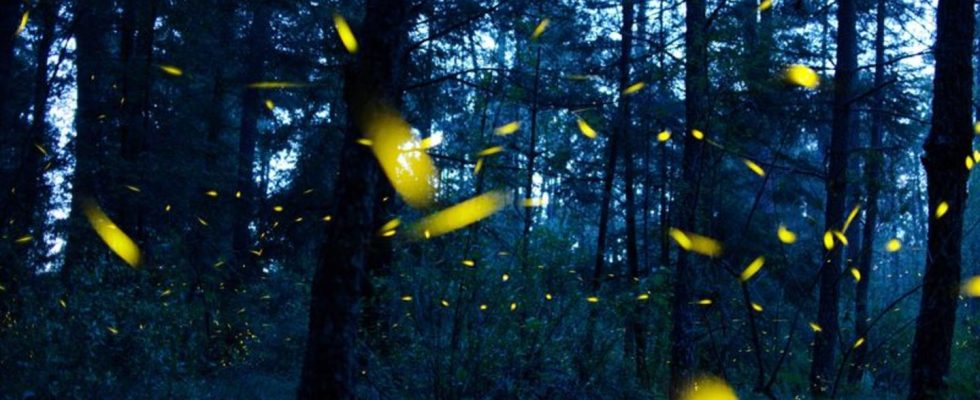light pollution
Brighter nights, fading firefly glow
Fireflies emit light signals during the mating season. photo
© Jesus Alvarado/dpa
They are a fascinating sight on balmy summer nights: fireflies that use their green light to look for partners. But a study shows that this romantic quest is becoming increasingly difficult.
Increasing light pollution at night threatens glowworm populations worldwide. A British research team warns of this in the journal “Journal of Experimental Biology”. His study shows that street lamps and other artificial light sources can outshine the glow of female fireflies. As a result, they would no longer be found by males.
While artificial light can turn night into day for humans, many nocturnal animals pay a heavy price for lighting – particularly those that use their own luminescence to forage or mate. These include, for example, fireflies (Lampyridae), also known as fireflies. This was discovered by researchers at the British University of Sussex, who collected male fireflies (Lampyris noctiluca) and placed them in a Y-shaped maze in the laboratory. In this maze, a green LED lamp simulated the glow of a female animal.
The scientists recorded how long it took the males to find the putative females under different lighting conditions. They turned on a white light that ranged in intensity from 25 to 145 lux, with 145 lux corresponding to the light from a street lamp, according to the research team. The result: while all the fireflies found the green LED in the dark, only 70 percent did so with the weakest level of white light and only 21 percent with the brightest light.
Males find it difficult to find their way to their potential mates
Co-author Estelle Moubarak suspects that the white light blinds the males, making it difficult or impossible for them to find their way to their potential mates. Male fireflies have large compound eyes that they can cover with a head shield that acts like sunglasses and reduces the amount of light coming in. In fact, the beetles shielded their eyes under artificial lights for 25 percent of the experiment, compared to only about 0.5 percent of the time when the maze was in the dark.
“The fact that the male fireflies keep their eyes below their headshield shows that they are trying to avoid exposure to the white light, suggesting they dislike it,” said study leader Jeremy Niven. The researchers conclude that the observed effect could also occur in other nocturnal insects.

